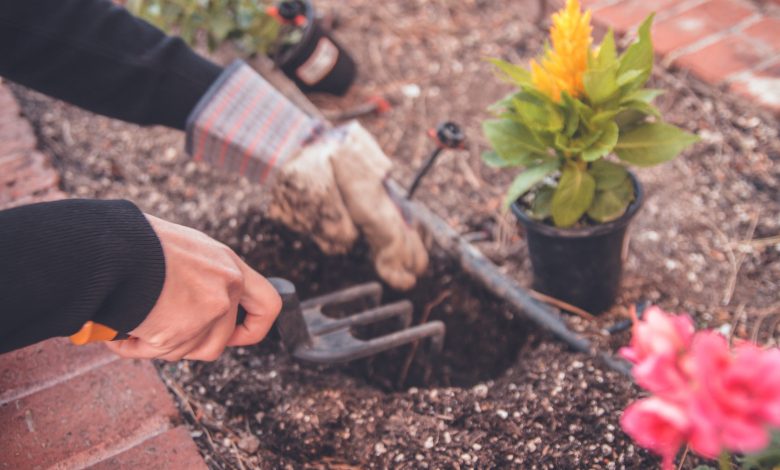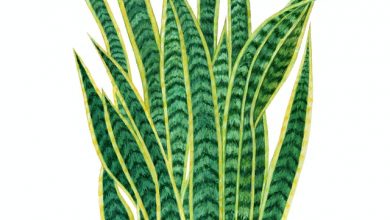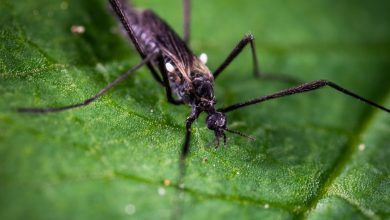Garden Hacks That Every Gardener Needs To Know

Gardening may be your passion, but it is never a bed of roses. Growing seeds are coupled with “thorns,” such as struggling with pests and weeds.
Yet you got what it takes. You love nature. You enjoy the morning mist, the warm sunlight against your skin, and the fresh gust of the wind while you’re wiping sweat from your forehead. It’s a pretty picture of being a gardener. It’s one of the many perks of being blessed with the green thumb. Any seed, be it a flower, fruit, herb, or vegetable, will surely grow under your tender loving care.
In this article, you will discover some gardening hacks which can aid in creating more wonders using that magic at your fingertips. These hacks can be done with items around the comforts of your home.
Household Item and Food Hacks

Hack #1: The Secret Of Veggie Water
According to health experts, steaming vegetables is better than boiling, as it helps retain the nutrients, flavor, and the color of the vegetable. It makes a healthier and lighter meal not only for you, but for your garden plants as well. The water used to steam the veggies can be set aside and used to water your growing plants. The veggie water will add some additional nutrients that your garden will love.
Hack #2: Creating Your Own Powerful Fertilizer
The same goes with blood, leftover fish, and bone meal, which all make excellent fertilizers.
The nutrients from these homemade, organic fertilizers need to be digested first by fungi, earthworms or bacteria before they are finally absorbed by your plant. On the other hand, commercial fish fertilizers are comprised of similar ingredients, such as scales, skins, and fish bones, mixed with sulphuric acid to lower pH.
Since the nutrients have been filtered beforehand, it is easily absorbed by the plants. However, nothing beats organic, so while the process of absorption takes longer than commercial fertilizer, the plants will grow faster and stronger with your homemade compost.
Hack #3: Adding Nutrients & Attracting Butterflies
Vegetable and fruit peelings can be grounded using your food processor then sprinkled in the soil like Epsom salt, which is rich in magnesium.
If you have bananas sitting around, you can bury the peels about two inches deep around rosebushes, which will add additional nutrients for your beautiful flowers to absorb. Placing overripe bananas in your garden will attract butterflies and bees. These insects are perfect for pollinating your flowers.
Hack #4: The Power Of Jello
The sweet dessert is not only a treat for you, but also for your growing plants. Root crops, such as carrots or radishes, thrive better if the seeds are mixed with powdered and unflavored Jello due to its nitrogen content, which is required for growing seedlings. You will only need three tablespoons to mix the pack of seeds, which will aid in the overall growth of your plants.
Hack #5: The All-Natural pH Testers
Vinegar is not only for cooking or dipping. You can check the soil’s pH using it. If the soil produces bubbles when it comes in contact with vinegar, it means it’s alkaline – that is usually rich in limestone or chalk. It can also be used to get rid of weeds in your garden. Spray it directly to the peeping weeds or grass. Be careful not to spray it on your plants though!
Baking soda can be used to check soil pH too. If bubbles appear upon contact with the earth, it means the soil is acidic. Acidic has a pH level below 7, whereas alkaline has a pH level above 7. For the best growth for your plants, it is best to choose a pH level that is neutral or slightly below 7, as most plants cannot thrive in high pH conditions.
Hack #6: Goodbye, Spiders!
Aphids or spiders can be driven away by garlic and onion. Instead of throwing away skins, collect them into a jar of water. Leave it for a week. You may spray the water where aphids or spiders are.

Hack #7: A Recipe to Drive Away Rabbits And Woodchucks
For rabbits or woodchucks roaming around the garden, you may mix two tablespoons of dish detergent with two raw eggs, a quarter of warm water, and two tablespoons of hot sauce. Spray the mixture to the base of your plants. Grounded cayenne paper can also be sprinkled for an extra little kick.
Hack #8: Homemade Watering Cans
If you’ve been accumulating milk jugs, you can turn them into watering cans. Simply poke holes on the cap and expect perfect water distribution. This is especially useful if your watering can have a large head, making it hard to water your smaller plants.
Hack #9: An Eggcelent Way To Start Your Seeds
After a breakfast of bacon and eggs, the empty egg cartons can be used as seed starters. The empty eggshells can also be crushed for pests such as slugs.
Hack #10: Sponges And Pots
After washing the dishes, don’t throw away the sponge! Instead, you can place them at the bottom of your planters. This will keep the plant roots hydrated all day long.
Hack #11: Re-Use Your Plastic Forks
If you opted to skip the dishes by using plastic utensils, then make sure you save the plastic forks. These forks can be stuck in the soil upright around your plants to drive away rabbits and deer.
Hack #12: Starbucks Seed Starters
If you’re too busy gardening to make your own cup of java, you might opt for a to-go coffee. After savoring the coffee from your Starbucks cup, never let it go into the biodegradable can.
You can use the cups as seed starters. You’re not only beautifying the environment and helping with oxygen production through your gardening, but also alleviating garbage pollution. All your efforts would be helping Mother Earth. Coffee filters are also perfect for potted plants to drain water effectively.
Hack #13: The Benefits Of Leftover Coffee Grounds
If you prefer brewing your own coffee, then make sure you hold onto the leftover coffee grounds (tea grounds will also work). The remaining grounds can be placed under your plants, especially flowering ones, to create brighter flowers and to keep pests away. Slugs are not fans of coffee since it makes them produce more slime.
Also, if you’re a fan of chamomile tea, you can use it to protect your seedlings from fungi. Chamomile contains anti-fungi properties that fight off pathogens and keep your garden healthy and you happy.
Hack #14: Beer & Wine In The Garden
After a long day in the garden, it’s great to kick back and watch television with a cold beer or glass of wine. If you are encountering slugs or snails in your garden, you can pour beer in saucers and place them in the garden to drive away the slippery slugs. This is best done during sunset.
When you are finished with that wine, you can wash your wine bottles thoroughly and turn them upside down to make some cool self-watering planters.
Beer cans can be placed in the bottom of giant pots for better air circulation.
Hack #15: Old School Media In The Garden
Even with the growth of social media, reading the daily newspaper while sipping your favorite coffee or tea will always remain a classic experience.
Using newspapers are an excellent way to dry herbs quickly. You can wrap the herbs around a few sheets and place it in the backseat of your car. The herbs will dry properly within one to two days.
To maintain the soil’s moisture, you may also shred the newspaper and add the little pieces to your compost bin. Spreading sheets of papers around the plants or before putting topsoil will prevent any weeds or grass from having their chance to grow.
One last use for your trusty ole newspaper: wrap tomatoes off the vines to ripen them.

Hack #16: Hold Onto That Lint
Instead of simply discarding dryer lint, hold onto it, as it can help with your garden. Like the newspaper, it helps maintain the soil moisture by tilling the lint into the soil of your garden.
For planting, you may grab a fistful of lint and plant it together with the seeds. The fluff will absorb and hold moisture, supplying the seeds with an adequate amount of humidity until it roots.
Hack #17: A “Hair” Brained Idea
A visit to the barber can mean a new way of getting rid of rabbits, woodchucks, snails, and even deer. Just sprinkle the hair around the garden to prevent those pests from entering.
Hair can also maintain moisture and prevent weeds and soil erosion. It adds nitrogen, which is a much-needed nutrient for your growing plants.
Hack #18: Toilet Paper Seedlings
Toilet paper rolls are known for being recycled and turned into beautiful things. Such is the same for gardening. Toilet paper rolls can be used for growing seedlings before transplanting them into the ground.
Hack #20: Weeds Are No Match For Cardboard
Is there an area of your garden that is just filled with weeds? Perhaps, you are trying to convert a new plot of land into a beautiful garden. You can lay down cardboard to stop the weeds or grass from growing. Proceed in covering the cardboard with soil and organic compost. You can either wait for the weeds to break down before removing the cardboard, or completely cover it with more compost to be the new garden bed.
Hack #21: Scary Aluminum
Do you have any aluminum cans, plates, or foil? You can hang the aluminum up to scare away animals. The sheen and the sound of the cans bumping into each other can scare the animals away. You can also cut out aluminum foil into little pieces and sprinkle it around the plants.
Hacks For Every Stage of Gardening
Now that you know the secret hacks which can be done using everyday things in your home, let’s talk get a few tips on how to properly plan, grow, maintain, and harvest your garden.
These are not hacks in the typical sense of the word, but some excellent tips from the pros that will help you grow a beautiful garden for years to come.
As simple as they can be, good gardening results can stem from minimalism. You don’t need to spend too much money. Your time and effort will be your most significant investment.

Before Planting
Get Your Compost Ready
Using the organic materials revealed so far, make sure to prepare your compost a few weeks before the perfect planting season. It should consist of an equal balance of green and brown material. This can include eggshells, old egg cartons, vegetable and fruit peelings, coffee or tea grounds, and shredded newspapers.
Plant According to the Moon
A traditional practice by long-time professional farmers is to plant according to the moon cycles. Annual flowers and any plants bearing crops above the ground should be planted from the new moon until it is full. Alternatively, plants with underground bulbs, such as biennial and perennial flowers, should be planted the day after the full moon until it reverts to being new again.
Plant Your Garden Carefully
Plant arrangement should be planned accordingly. Prevention is better than a cure. You don’t want to be in the situation wherein your garden is all set, and suddenly it occurs to you that changes are required. Changing a garden layout is a rigorous task if it was not planned ahead.
Understand Your Plants
Start by knowing the form of your plants. Is it rounded? Matting? Weeping? Oval? Spreading? Spike? Is it mounding? Knowing the type of your chosen plants will help you visualize the designs or structure that you want. Arrange the plants in a way that they look unified. Details are important.
Take the future into consideration. Make sure you also consider how wide or big a plant can grow, and also any possible expansions. That way, your plants will freely grow with adequate placements, and you can add more to the collection in the future.
Thinking About the Theme
Think about the theme as well. Your garden is an extension of your home, so consider a theme that will complement it. Choose accompanying lines, geometric shapes, and colors. You may also want to check out landscaping design ideas.
Getting the Soil Ready
The vital part is the soil since this is where the plants will grow and nourish. Aside from choosing the earth with the right texture and amount of nutrients, aerating the ground is the best for plant growth. This is more recommended than tilling.
While tilling can also make way for oxygen as much as aerating could, it destroys natural soil life, such as earthworms. It can also dig up weed seeds, initiating a bigger problem in the long run.
DIY aerators are all over the internet nowadays. However, if your gardening skills are not at par with your DIY skills, you might want to consider investing in a plug or spike aerator.
Planting in the Right Season
Spring, while the most preferred, is not the only season for planting. In fact, it is better to save the most critical stages of gardening for other seasons.
Transplanting plants from one area to another is best done during the early fall. This leaves late summer for harvesting and preparing for fall seeding. Of course, this will depend upon your plant choice. Some plants thrive better when planted in spring, others in fall, summer, and even late winter. Research is vital, so there won’t be any need for tweaking or uprooting your plants.

During The Garden Season
The hacks in the first part of this article are pretty much the “during” part. This phase includes maintaining your plants. It is a very critical period as this will determine the yield.
While planning and preparing the garden is essential, it is nothing compared to maintaining your garden. It is a lot of work, and while it sounds exhausting, the harvest will be worth it.
General Tips For Preventing Pests
When trying to keep pests out of your garden, herbs like oregano, mint, thyme, and dill can be added to your landscape plan. Installing fences will also help. Bird netting, chicken wire, and mesh cover will do. It should be deep enough so burrowing animals can’t get through.
It is also crucial that you know how to differentiate the pests from pets. If it goes along well with your garden’s theme, you may incorporate a little pond for frogs. Frogs can lessen the number of insects that may try to destroy your garden. If you planted trees, birds can make homes in them and do a great job of hunting pesky insects as well.
Similarly, chickens and ducks can also be a great addition to your garden. They provide nutritious eggs and reduce the slugs and snails at the same time. Their manure is also an excellent fertilizer. Sure, you might be on the edge of creating a full-fledged farm, but that could be fun too, right?

After The Garden Season
So the plants are now ready for harvest! It’s a surreal moment for a gardener. The best time to harvest is early morning and when your crops are dry to avoid diseases for your next batch.
Nobody can blame you for being excited about picking your crops. It’s good because harvesting as soon as your vegetables are ripe will make them flower more. Cut back or pinch them with care to make them produce even more.
You have to be very gentle in picking the fruits of your labor. The branches and stems are just as sensitive as the produce. Pruning shears or a knife will help. Avoid stepping on vines as well, as you can leave holes where diseases can penetrate and destroy your next yield.
Also, just because the fruit or vegetable is enormous, doesn’t mean it’s perfect. Some plants can be picked before they are fully developed like zucchini, radishes, broccoli, lettuce, basil, and others. Pick them while they are still young and soft. Others need to complete their maturity though, like watermelons.
Though harvesting seems like the goal, gardening does not end there. A gardener should know when to harvest depending on the growing season and how to preserve the produce. Necessary skills like freezing, drying, canning, pickling, or making jams and jellies should come in handy.



